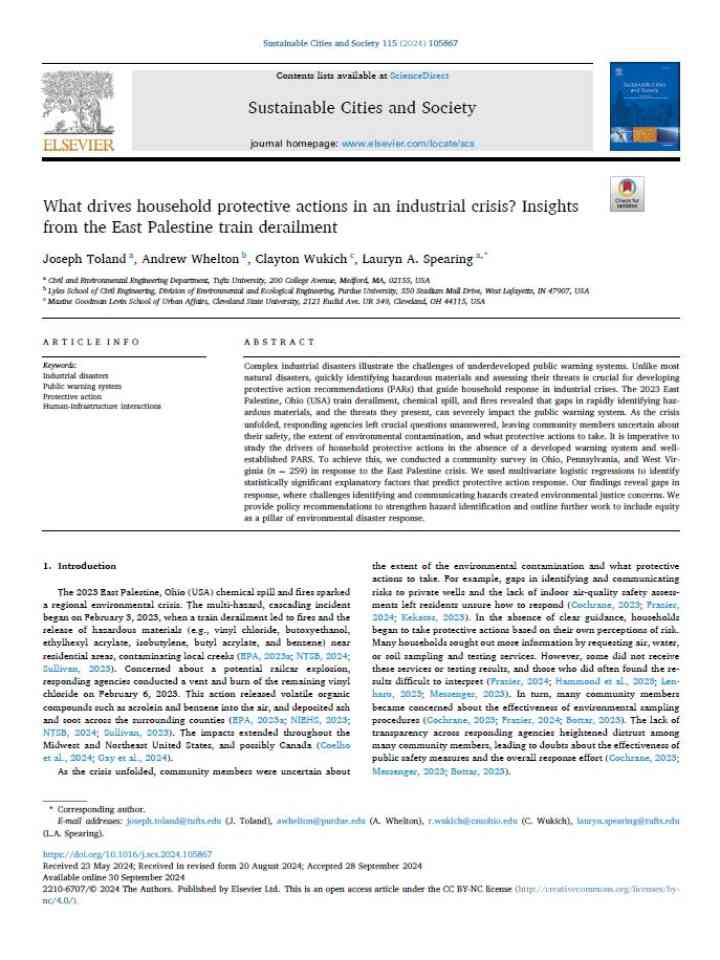What drives household protective actions in an industrial crisis? Insights from the East Palestine train derailment
By integrating perceptions of social equity into the Protective Action Decision Model (PADM), this study uncovers how these perceptions may influence protective action in industrial crises, and in particular the 2023 East Palestine, Ohio (USA) train derailment. The authors examine factors within the PADM influencing household protective action response from a community survey across Ohio, Pennsylvania, and West Virginia (n = 259). We found that, while environmental cues played a limited role, social cues such as community engagement and perceptions of equity, fairness, and transparency significantly influenced protective action decision-making in response to potential household contamination in the absence of official warnings and PARS.
This study challenges theoretical assumptions about public warning systems often made in previous research, revealing how failures in hazard identification can impact the effectiveness of risk communication in an industrial crisis, thereby influencing protective action. Based on our findings, gaps in sampling and testing may have impacted the detection of hazards, undermining the effectiveness of an already underdeveloped public warning system. Strengthening these public warning systems will require the implementation of new policies and guidelines for responding agencies in designing and conducting emergency sampling and testing plans, communicating risks to the public, and establishing recommendations for protective actions.
Explore further
